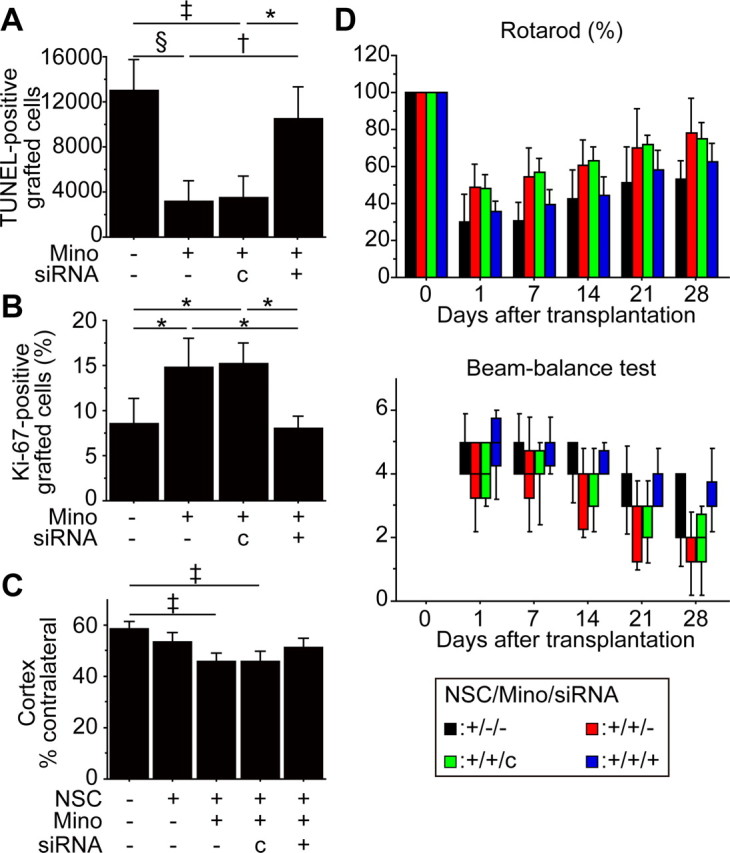Figure 9.

Inhibition of Nrf2 abolished minocycline-induced neuroprotection in vivo. The PCNSCs (10 μm) or non-PCNSCs, transfected with control- or Nrf2-siRNA, were transplanted following focal cerebral ischemia. A, B, Stereological counting of TUNEL-positive (A) and Ki-67-positive (B) grafted cells 2 d after stroke and transplantation. Nrf2-siRNA suppressed minocycline-induced cytoprotection and proliferation of the grafted cells (n = 4). Mino, Minocycline; c, control-siRNA. C, Cortical infarct size evaluated by H&E staining 28 d after transplantation. The PCNSCs, along with Nrf2-siRNA pretreatment, failed to attenuate lesion size (n = 7). D, Behavioral performance analyzed by the rotarod test and beam-balance test. Nrf2-siRNA diminished the enhanced behavioral improvement observed in the PCNSC group from 1 d through 28 d after transplantation (n = 7). Black bars denote non-PCNSC group; red bars denote PCNSC group (10 μm); green bars denote PCNSC group (10 μm) with control-siRNA transfection; blue bars denote PCNSC group (10 μm) with Nrf2-siRNA transfection. *p < 0.05; †p < 0.01; ‡p < 0.005; §p < 0.001.
